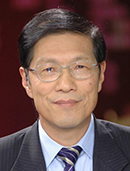US Secretary of State John Kerry said his latest visit to China yielded results that “exceeded” his expectations.
In his first visit to China after taking office, Kerry met with Chinese President Xi Jinping and Premier Li Keqiang and had talks with State Councilor Yang Jiechi and Foreign Minister Wang Yi.
What was achieved in the visit?
First, both sides reaffirmed their commitment to a co-operative partnership, and promised to continue working for the establishment of a new type of big power relationship that is based on equality, mutual trust, co-operation, and win-win solutions. This commitment created a favorable condition for a steady development of the bilateral relationship. The two sides said they would keep strategic dialogues on the top level and make full use of the current communication mechanism. Presently there are more than 90 communication platforms between the two countries.
Second, both sides agreed to continuously enrich bilateral relations and achieve new breakthroughs in the depth and quality of their cooperation, which will inject force into the effort to build a new type of great power relationship. Sino-US economic and trade relations are the most powerful proof of the win-win and interdependent nature of bilateral relations. The Chinese side emphasized the importance of the continued development of these relations for the two countries’ common interests. But there are also obstacles to this development. Some people in the US always want to politicize the trade relationship, and Washington has maintained restrictions on high-tech exports to China.
China has complained about the problems. The United States has promised change but has not gone into action. Now that President Barack Obama has begun his second term and vowed to expand exports, it is high time Washington eased its restrictions on high-tech exports to China.
The two sides also agreed to issue a joint statement on climate change and announced that the two countries will set up a climate change workforce under the framework of the China-US Strategic and Economic Dialogue. As the two countries are the world’s top energy consumers and greenhouse gas emitters, this decision will have great significance for the creation of a new international mechanism to address climate change.
Third, both sides emphasized that they need to strengthen their interactions in the Asia-Pacific region, where their interests and differences converge. In its first term of office, the Obama administration adopted the strategy of rebalancing to the Asia-Pacific region. The strategy brought complexities to the region and caused widespread concern among relevant countries, including China. There has been a tendency toward integration in the region. As the integration process touched upon the interests of all countries in the region, it has been on the agenda of talks between Chinese and US leaders over the past few years.
There are two modes of integration going on in the region at the moment. One is the Regional Comprehensive Economic Partnership (RCEP), or Ten-plus-Six as is commonly known, of which China is a member. But the US is not included. The other is the US-led Trans-Pacific Partnership (TPP) involving 12 countries. China is not in it but Japan has said it would like to join the group. Some foreign commentators have said the two groups represent competition between China and the US in the regional integration process. In fact, there are far more economic co-operative mechanisms than these two. They may overlap with one another in membership but should not be mutually exclusive. During Kerry’s visit, Chinese leaders told him that both countries should adopt an open and inclusive approach to the region’s economic integration. As this writer sees it, not one single country can dominate the regional integration. There can be different groups competing with each other on the basis of co-existence. The competition should be aimed at promoting regional and global economic development rather than excluding certain countries from the integration process.
Currently, the nuclear and missile issue on the Korean peninsular is causing great concern in the international community, especially among Northeast Asian countries. This was naturally a major topic in Kerry’s talks with the Chinese side. When visiting the Republic of Korea, Kerry made it clear that the US would not accept the Democratic People’s Republic of Korea (DPRK) as a nuclear country, and would want the nuclear issue be settled in a peaceful way, including the Six-Party Talks and a bilateral talk between the US and the DPRK. Kerry said the DPRK must prove its sincerity in denuclearization. China reiterated its stand on the issue that consistent efforts should be made to maintain peace, stability and denuclearization on the Korean peninsular, and to settle the issue through dialogue. Major progress was achieved in the Six-Party Talks, including the Joint Declaration issued on 19 September, 2006 and the disablement of nuclear facilities in Yongbyon.
In recent years, however, there were twists to make the issue more complex. Pyongyang’s pitch of war rhetoric has been rising in a series of announcements,including an announcement of a state of war on the peninsula and an imminent trial shot of mid-range missiles. The US, on its part, intensified its joint military exercises with its allies and strengthened its military presence in the region by deploying F-22 stealth fighters, B2 stealth bombers and a B-52 strategic bomber. Both parties’ moves are detrimental to the region’s stability. After the Kerry visit, both the US and China should acquire a clearer understanding of each other’s positions and intentions, and work together to defuse tensions on the Korean peninsular. The Six-Party Talks should be resumed as soon as possible with concerted efforts from all relevant parties. To free this region from conflict and war, two procedures are essential: one is the process of denuclearization and the other is to make the DPRK integrate into the regional community.
Kerry’s latest visit and other visits by Obama administration’s high-ranking civilian and military officials prior to it indicated that the bilateral relationship between the US and China has safely passed the transition period and will gain greater momentum in its development.
Tao Wenzhao, Researcher, Institute of American Studies, Chinese Academy of Social Sciences



